Abstract
1. Oral labeltalol and propranolol have been compared in healthy men with regard to the effects on heart rate, blood pressure and peak expiratory flow rate (PEFR) at rest and the changes induced by exercise. 2. Labetalol caused a dose-related reduction in standing diastolic pressure at rest whereas propranolol did not but neither drug altered standing systolic pressure at rest. 3. In the doses compared, propranolol was consistently more potent than labetalol in influencing blood pressure changes induced by exercise, in lowering heart rate at rest and reducing PEFR at rest. 4. Labetalol and propranolol are both beta-adrenoreceptor antagonists and the observed differences in the profiles of the two drugs are probably directly related to the additional alpha-adrenoreceptor blocking property of labetalol not possessed by propranolol. Because of these differences labetalol may be expected to have advantages in the treatment of hypertension.
Full text
PDF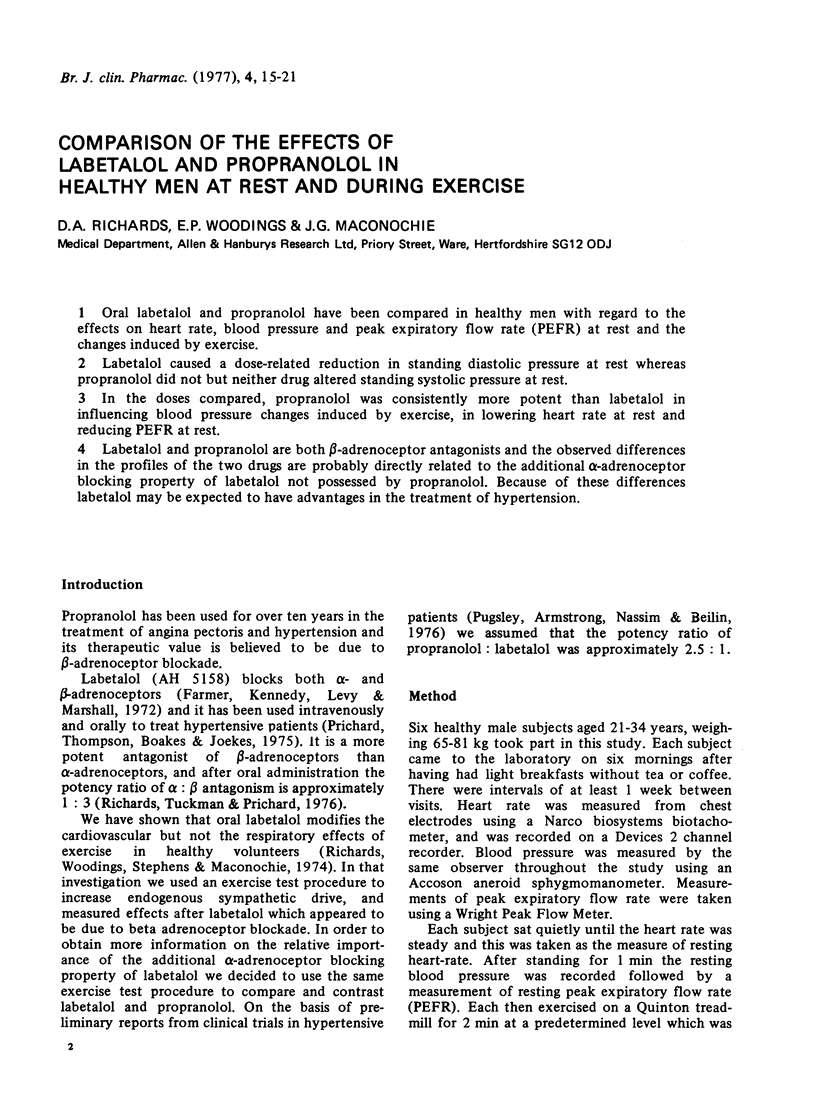
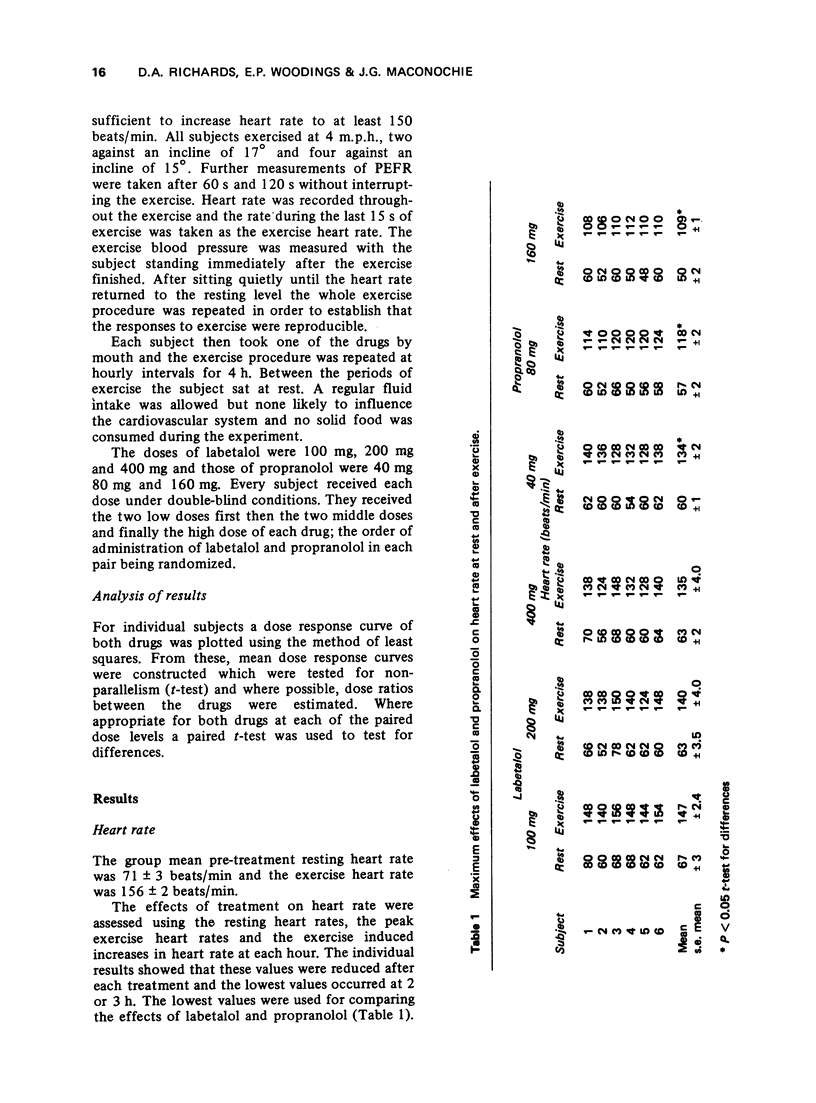
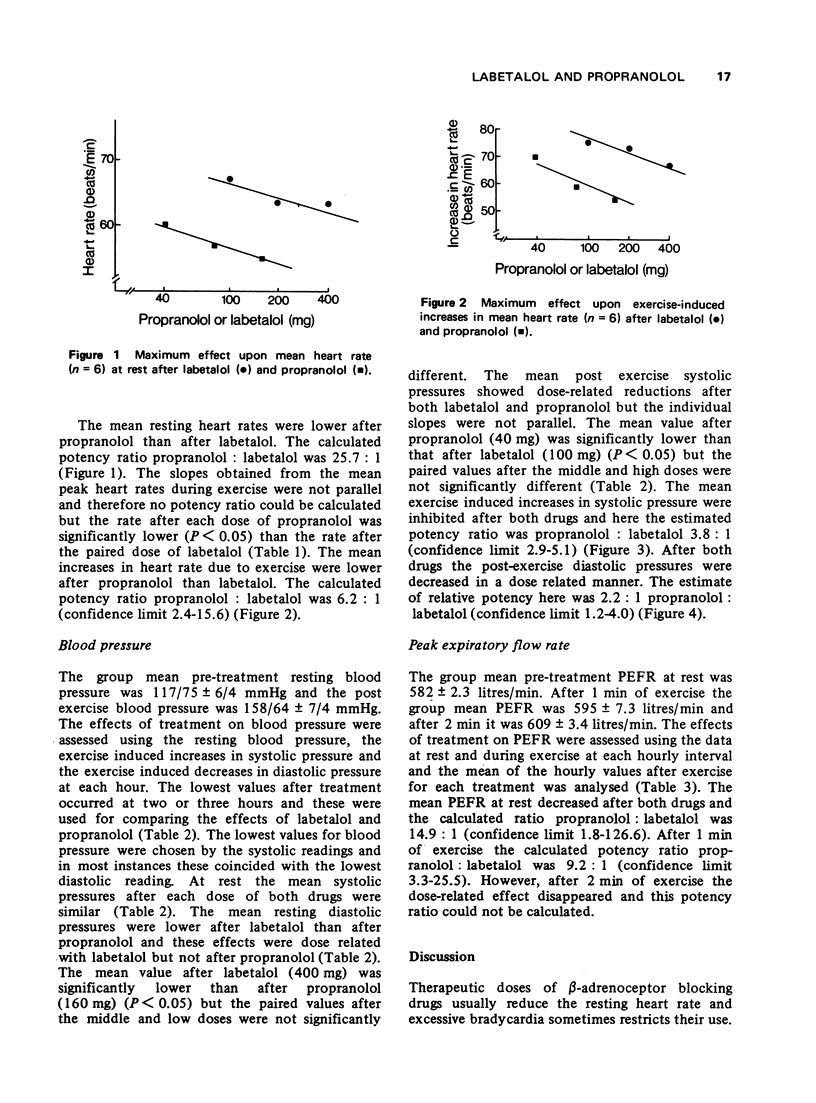
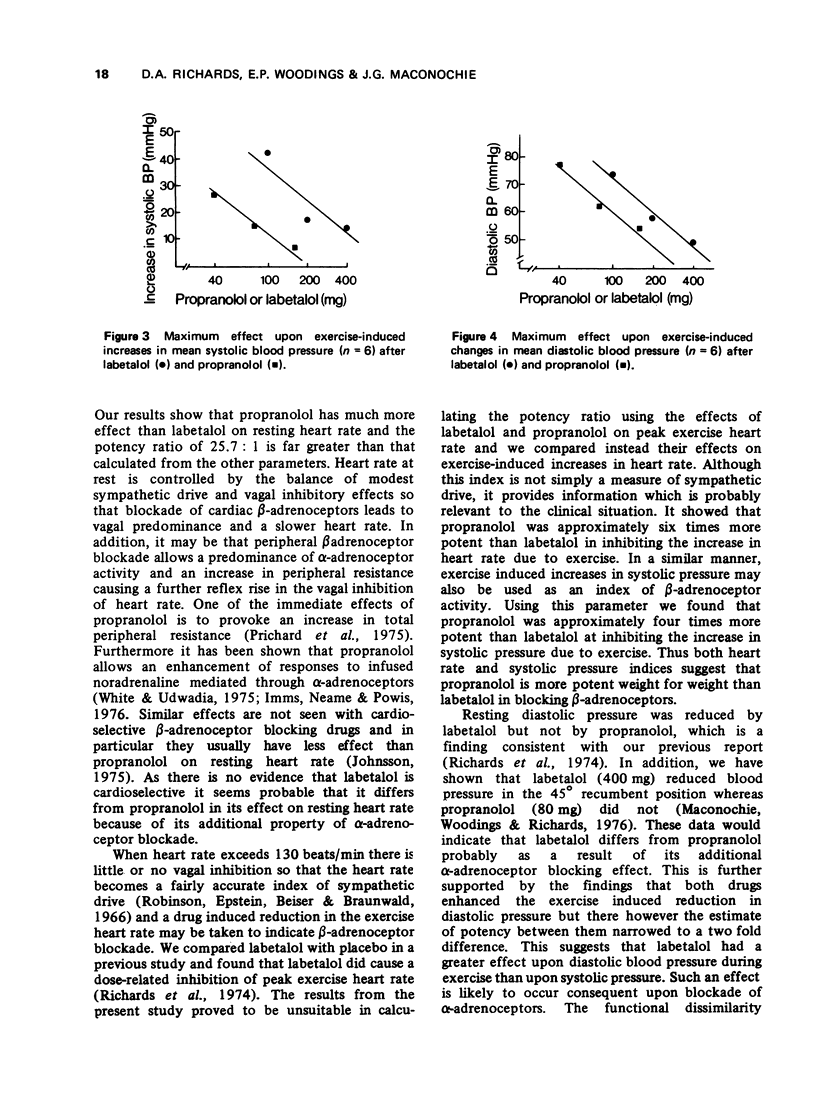
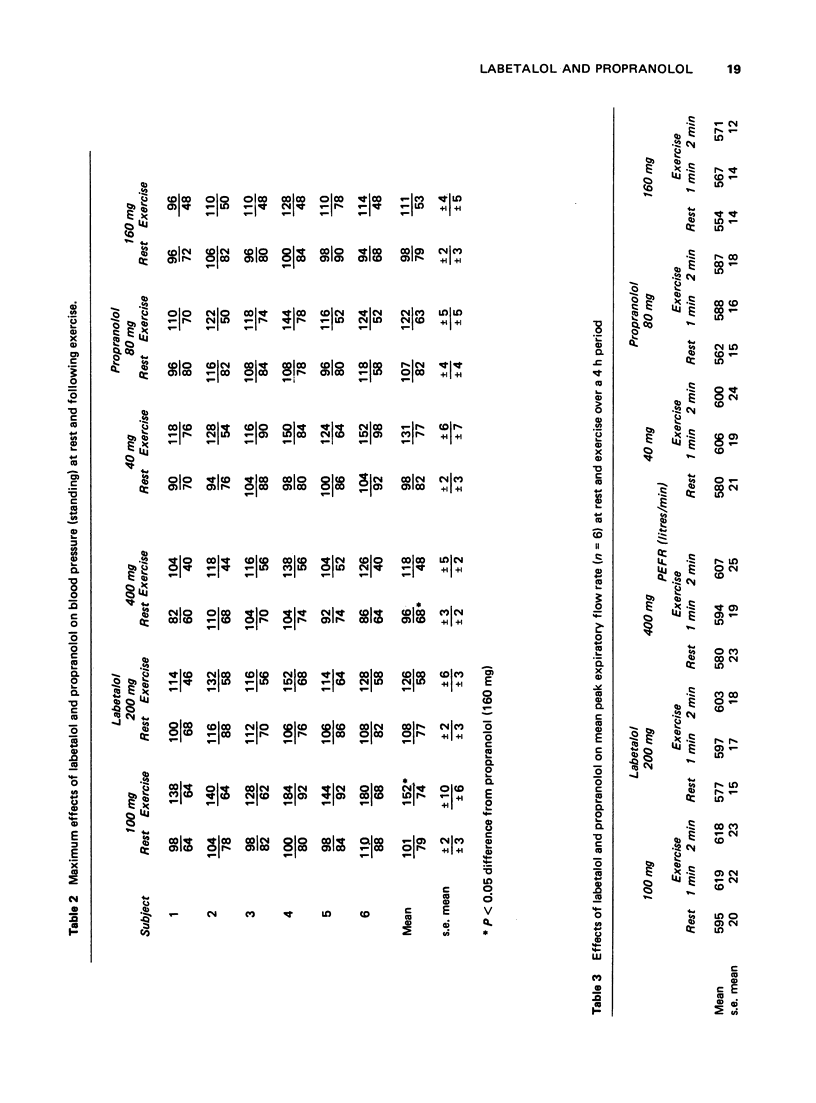
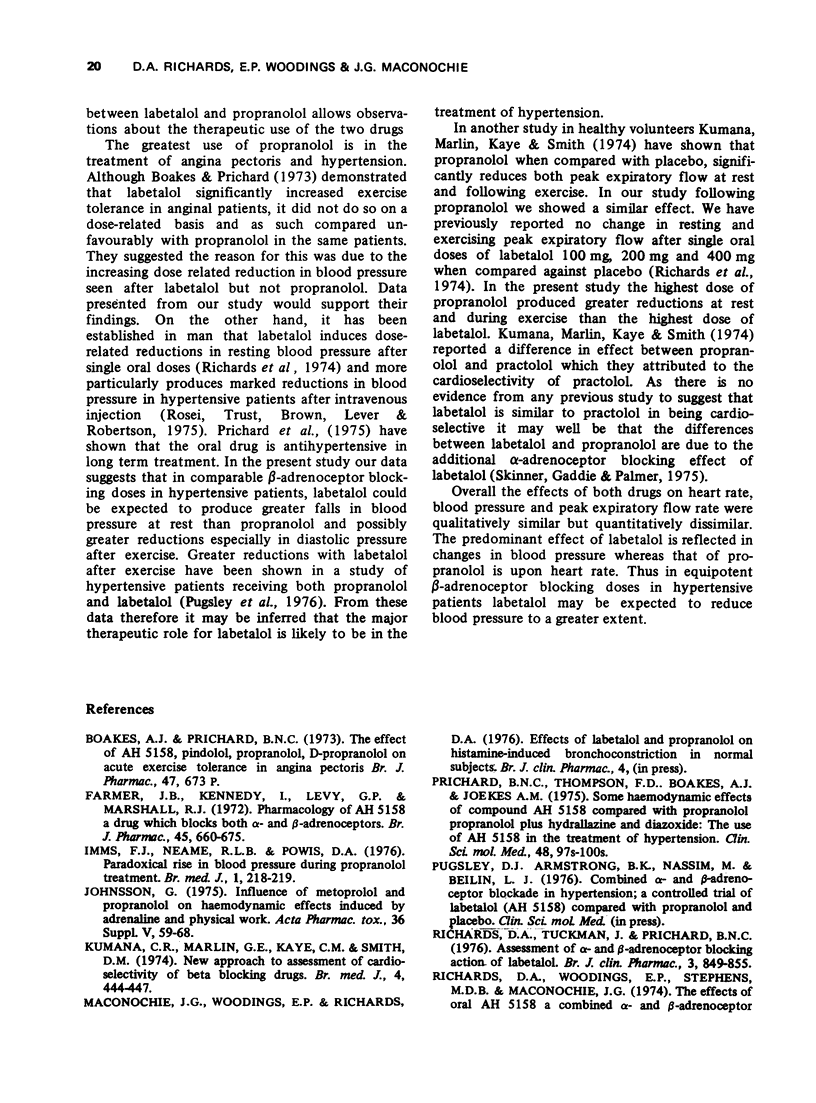
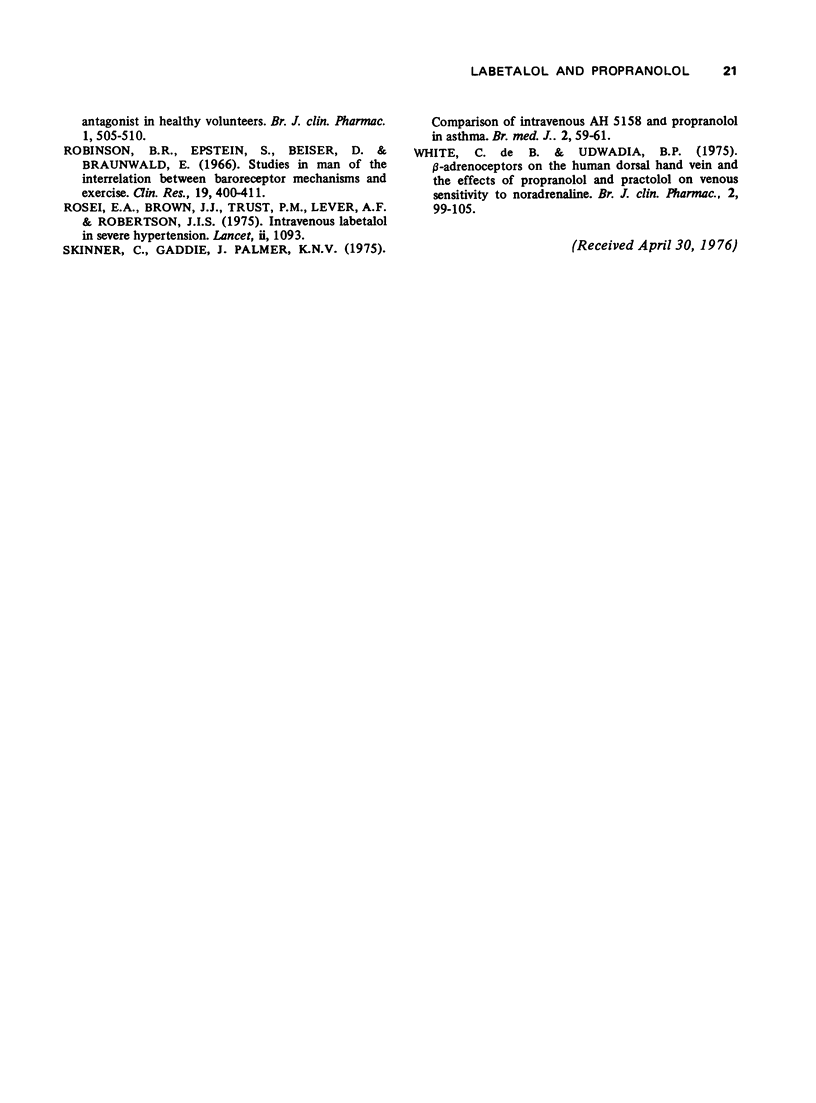
Selected References
These references are in PubMed. This may not be the complete list of references from this article.
- Johnsson G. Influence of metoprolol and propranolol on hemodynamic effects induced by adrenaline and physical work. Acta Pharmacol Toxicol (Copenh) 1975;36(Suppl 5):59–68. doi: 10.1111/j.1600-0773.1975.tb03322.x. [DOI] [PubMed] [Google Scholar]
- Kumana C. R., Marlin G. E., Kaye C. M., Smith D. M. New approach to assessment of cardioselectivity of beta-blocking drugs. Br Med J. 1974 Nov 23;4(5942):444–447. doi: 10.1136/bmj.4.5942.444. [DOI] [PMC free article] [PubMed] [Google Scholar]
- Richards D. A., Tuckman J., Prichard B. N. Assessment of alpha- and beta-adrenoceptor blocking actions of labetalol. Br J Clin Pharmacol. 1976 Oct;3(5):849–855. doi: 10.1111/j.1365-2125.1976.tb00637.x. [DOI] [PMC free article] [PubMed] [Google Scholar]
- Robinson B. F., Epstein S. E., Beiser G. D., Braunwald E. Control of heart rate by the autonomic nervous system. Studies in man on the interrelation between baroreceptor mechanisms and exercise. Circ Res. 1966 Aug;19(2):400–411. doi: 10.1161/01.res.19.2.400. [DOI] [PubMed] [Google Scholar]
- Rosei E. A., Trust P. M., Brown J. J., Lever A. F., Robertson J. I. Letter: Intravenous labetalol in severe hypertension. Lancet. 1975 Nov 29;2(7944):1093–1094. doi: 10.1016/s0140-6736(75)90470-5. [DOI] [PubMed] [Google Scholar]
- Skinner C., Gaddie J., Palmer K. N. Comparison of intravenous AH 5158 (ibidomide) and propranolol in asthma. Br Med J. 1975 Apr 12;2(5962):59–61. doi: 10.1136/bmj.2.5962.59. [DOI] [PMC free article] [PubMed] [Google Scholar]
- White C. B., Udwadia B. P. Beta-adrenoceptors in the human dorsal hand vein, and the effects of propranolol and practolol on venous sensitivity to noradrenaline. Br J Clin Pharmacol. 1975 Apr;2(2):99–105. doi: 10.1111/j.1365-2125.1975.tb01564.x. [DOI] [PMC free article] [PubMed] [Google Scholar]


